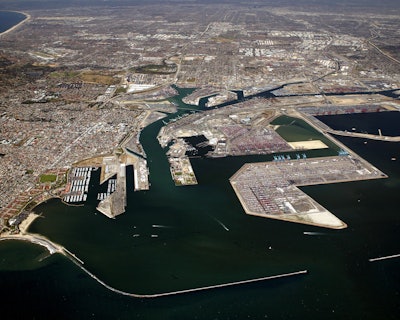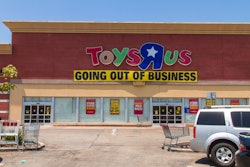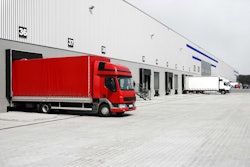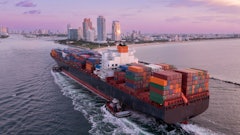
Industrial real estate across the United States, and California in particular, are enjoying a boom. According to online real estate trading platform Ten-X, vacancy rates in the sector hit a record low of 7.3 percent in 2017, down from 8.1 percent in 2016, and this year’s industrial vacancy rates are on track to hit another all-time low.
Metro markets in California, including Los Angeles, San Jose and San Francisco, are especially poised for investment, states Tex-X, thanks to strong demand from cloud computing and legalized cannabis industries, while e-commerce growth continues to spur industrial real estate demand throughout the Golden State and across the country, in general.
Jud Clements, executive managing director with Cushman & Wakefield’s capital markets group, agrees, noting in a recent article that “the most significant trend driving industrial demand continues to be the proliferation of e-commerce retail.
Log in to view the full article
Industrial real estate across the United States, and California in particular, are enjoying a boom. According to online real estate trading platform Ten-X, vacancy rates in the sector hit a record low of 7.3 percent in 2017, down from 8.1 percent in 2016, and this year’s industrial vacancy rates are on track to hit another all-time low.
Metro markets in California, including Los Angeles, San Jose and San Francisco, are especially poised for investment, states Tex-X, thanks to strong demand from cloud computing and legalized cannabis industries, while e-commerce growth continues to spur industrial real estate demand throughout the Golden State and across the country, in general.
Jud Clements, executive managing director with Cushman & Wakefield’s capital markets group, agrees, noting in a recent article that “the most significant trend driving industrial demand continues to be the proliferation of e-commerce retail.
“Amazon, which generated a whopping $113 billion in revenue last year, is by far the market leader. Walmart ($23.5 billion in revenue) continues to pour capital into its e-commerce presence, as do online retailers like Wayfair ($5 billion in revenue), which have no brick-and-mortar locations,” he says.
Robust Port Activity a Contributor
Activity at key gateway ports in California, such as L.A.-Long Beach and Oakland, are also contributing to tightness in the industrial real estate market.
In her U.S. Ports Update, Year-End 2017, Tina Arambulo, part of Cushman & Wakefield’s U.S. industrial research practice group, states that: “Port of entry markets in the United States remain one of the key drivers in the industrial market. As imports have risen steadily over the last few years in many of the ports across the country, the appetite for nearby industrial space has been robust. A huge driver of demand, imports increased 7.6 percent in 2017 and represented 63 percent of the total loaded cargo volume in 2017 for the top 13 ports in the U.S. The National Retail Federation is predicting imports will be up 4.9 percent in the first half of 2018.”
Moreover, she notes, in 2017, West Coast Ports accounted for 52 percent of loaded imports at the top 13 U.S. ports.
“The ports of Los Angeles and Long Beach will remain fairly entrenched as the top ports in the country, and 2017 was a record setting year with a combined total of 16.9 million TEU, up 8 percent from 2016. Much of that traffic flows to the Los Angeles Basin, one of the hottest industrial markets in the country. The Inland Empire posted the highest leasing activity in the U.S. with 42.6 million square feet, followed by Greater Los Angeles with 34 million square feet,” Arambulo says.
For its part, the Port of Oakland chalked up the busiest year in the port’s 90-year history, she adds, handling 2.42 million TEU in 2017 and surpassing the previous record of 2.39 million TEU set in 2014.
Not surprisingly, competition is heating up for industrial real estate space in the L.A.-Long Beach port region.
Commercial real estate brokerage Lee & Associates states that rental rates for older industrial buildings are closing in on rates offered for newer properties in the region because tenants are looking to secure space now amid expectations that the economy will continue expanding over the next few years.
Even though older industrial buildings tend to be smaller with lower ceiling heights and typically have less room to maneuver trucks, these properties are getting multiple offers, notes the brokerage firm. Last year alone, prices jumped from an average of about $130 per square foot to over $215 per square foot.
New Projects for L.A.-Long Beach
Major real estate related expansion projects at the ports of L.A.-Long Beach are an indicator of the strong growth in trade at the twin ports and resulting demand for warehousing and distribution centers (DC) in the region.
In March, a subsidiary of Australia-based financial services firm Macquarie reached a deal with the Harbor Performance Enhancement Center (HPEC), a public-private partnership, to provide funds for the $130 million development of a 5.5-million-square-foot container-staging hub on Terminal Island at the Port of Los Angeles.
According to HPEC, the public-private project will be built on 110 acres, which is currently fallow. When complete, the project will take 3,500 truckloads per day from nearby container terminals to the HPEC staging area, improving flow, reducing emissions and enhancing the efficiency of imported containers passing through the 14 marine terminals at the L.A.-Long Beach port complex, a complex that supports 42 percent of all U.S. imports.
“The HPEC development presents a truly unique opportunity to make the San Pedro Harbor the most competitive gateway for transpacific freight, while reducing community impacts of the nation’s most important artery,” says Jonathan Rosenthal, founder and CEO of HPEC.
He adds that the container-staging hub would increase productivity at the ports by 10 percent or more.
Alex Cherin, executive director of California Trucking Association’s Intermodal Conference, notes that the hub will allow “the trucking community and its customers [to] have one start-stop location to pick up and drop off containers, distributing to regional hubs around-the-clock.
“This is one of the most important projects in the nation and will be a real game changer,” Cherin adds.
The project will follow the hub and spoke distribution model perfected by logistics companies such as Federal Express, UPS and Yellow Freight, explains HPEC.
Meanwhile, the Port of Long Beach has green-lighted the construction of an $820 million, 171-acre rail yard project that will likely break ground in 2020.
“As cargo continues to grow, having this infrastructure in place will help us move more of that cargo by rail,” says Heather Tomley, the port’s director of environmental planning, in an interview with Long Beach’s Press-Telegram. “Without this project, this cargo would have to go by truck.”
Tomley estimates that one rail trip from the port to the future rail yard could replace more than 700 truck trips.
Although the Port of Long Beach currently moves about 20 percent of containers via rail at its on-dock rail facilities, the port wants to boost that share to 35 percent.
Once underway, port officials estimate the rail yard project will take seven years to complete.
















